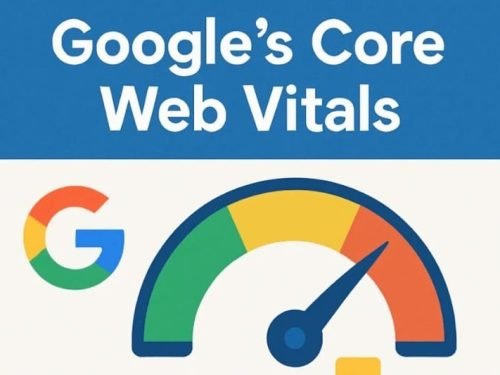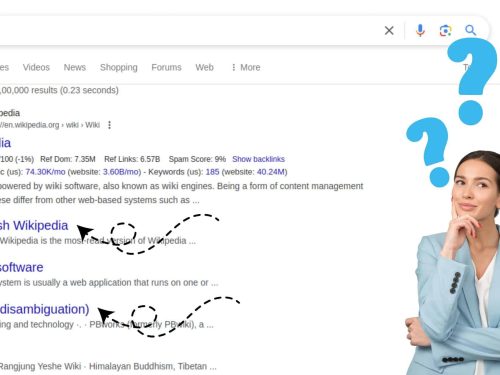Mobile-friendly websites are essential for online success because the majority of internet users access the web through mobile devices. It is the well-optimized mobile web design that impacts user experience and SEO. There are two popular approaches: AMP pages and responsive web design. Both aim to improve SEO mobile optimization but function differently. It is important to understand their differences, as it can help businesses make better choices. This blog compares AMP and responsive web design in terms of their performance, development, and impact on page speed.
So, let’s get started!
What is AMP (Accelerated Mobile Pages)?
AMP pages are lightweight versions of web pages. They load almost instantly on mobile devices. AMP removes unnecessary code and optimizes speed. Google introduced AMP for SEO to improve user experience. It uses a streamlined version of HTML and a unique JS library. AMP enhances page speed, which makes content load faster. It focuses on delivering essential information quickly. AMP improves rankings by reducing load time and bounce rates.

AMP works best for publishers, blogs, and news websites. It ensures instant access to articles and prevents slow-loading elements. However, businesses with interactive features may find AMP restrictive. Because it often removes custom scripts, advanced animations, and dynamic elements. AMP is still a strong tool for raising mobile search ranks and lowering bounce rates despite these drawbacks.
What is RWD (Responsive Web Design)?
Responsive web design ensures a website adapts to any screen size. It adjusts layout, images, and text based on device type. It uses flexible grids and CSS media queries for optimal viewing. Mobile web design using RWD offers full functionality. So that users can experience the same content on all devices. It also improves SEO mobile optimization by enhancing accessibility and usability.
RWD is beneficial for e-commerce, service-based businesses, and companies needing a consistent brand experience. It supports interactive elements, including forms, videos, and animations. This flexibility improves user engagement and conversion rates. RWD does not prioritize speed alone but ensures usability across all devices. Google recognizes responsive web design as a preferred approach for SEO optimization due to its consistent experience and accessibility.
What is the Difference Between AMP & RWD?
Both approaches improve mobile SEO, but they work differently. Below is a comparison of their technology, focus, and impact on SEO mobile optimization.
Technology
- AMP
AMP simplifies HTML and restricts JavaScript. It uses pre-rendering to load pages instantly. Google caches AMP pages to improve page speed SEO. AMP pages rely on a content delivery network (CDN) to serve data quickly. This speeds up load times but limits customization.
- RWD
Responsive web design uses flexible layouts and CSS queries. It adjusts website elements dynamically. No separate version is required, ensuring a unified experience. Developers have full control over design, branding, and user interaction. Unlike AMP, RWD does not rely on external caching but ensures optimal display across all screens.
SEO
- AMP
AMP improves mobile SEO by reducing load time. Faster sites rank higher in search engines. Google prioritizes AMP pages in mobile search results. However, AMP sacrifices design flexibility. Websites focusing on rich media and detailed customization may struggle with AMP. While speed is a ranking factor, user experience also plays a key role in SEO mobile optimization.
- RWD
Responsive web design provides a consistent user experience. Google recommends it for SEO mobile optimization. It supports better engagement and lower bounce rates. RWD ensures full content accessibility, unlike AMP, which may strip out non-essential elements. This makes RWD a reliable choice for long-term mobile optimization.
Focus
- AMP
AMP prioritizes speed and readability. It benefits news sites, blogs, and content-heavy platforms. It removes complex features for faster performance. However, businesses that require interactive elements and dynamic engagement may find AMP limiting.
- RWD
Responsive web design focuses on adaptability. It maintains brand identity and interactive features. RWD suits businesses requiring full functionality. It allows companies to implement marketing strategies, such as pop-ups, interactive widgets, and engaging multimedia elements, without losing design control.
Also, Check out our Web Stories to know more about Digital Marketing and Development
Development and Maintenance
- AMP
AMP requires additional development. It demands separate coding for mobile versions. Ongoing maintenance is needed to keep up with Google’s updates. Businesses must create and maintain an AMP-specific version of their content. This increases workload but improves speed.
- RWD
Responsive web design is easier to manage. It uses a single codebase across devices. Updates are simpler and require fewer resources. Since no separate version is required, businesses can focus on improving user experience rather than maintaining multiple versions.
Content and Functionality
- AMP
AMP limits interactive features. It restricts custom scripts and complex designs. Minimal content is prioritized for better page speed in SEO. While this benefits load time, it may limit user engagement. AMP is ideal for static content, but businesses requiring advanced interactions should consider alternatives.
- RWD
Responsive web design supports full functionality. Users get access to all content and interactive elements. This improves engagement and SEO mobile optimization. Unlike AMP, RWD supports embedded videos, complex animations, and interactive features. This makes it the best choice for businesses aiming for long-term growth and user retention.

Which Performs Better for SEO: AMP or RWD?
Both AMP and RWD impact SEO mobile optimization. AMP boosts page speed SEO, reducing bounce rates. However, it sacrifices customization. Responsive web design offers a complete user experience, which improves engagement. Google favors both, but businesses should choose based on their goals. If speed is a priority, AMP pages work best. For a better user experience, responsive web design is ideal.
AMP works well for publishers, news agencies, and static content websites that require instant load times. On the other hand, RWD is more suitable for businesses that rely on customer engagement, e-commerce, and marketing strategies that involve interactive elements. Since Google values both speed and engagement, the best strategy may involve using a combination of AMP for blog pages and RWD for main website content.
Conclusion
Both AMP and responsive web design enhance mobile web design. The choice depends on business needs. AMP ensures fast load times, improving page speed and SEO. RWD offers a better user experience for long-term engagement. The best approach balances speed and usability. Partner with Geek Informatic & Technologies Pvt. Ltd. for the right mobile SEO strategy and give users an exceptional experience.


















